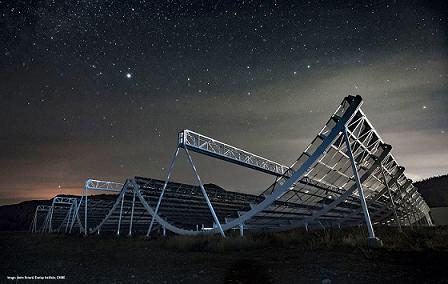Canada’s latest, largest and most powerful radio telescope started mapping the universe from September 7, 2017. This radio telescope, dubbed Canadian Hydrogen Intensity Mapping Experiment (CHIME) has been built at the Dominion Radio Astrophysical Observatory in the south Okanagan and is expected to help astronomers and researchers better understand gravitational waves, radio bursts from pulsars and the history of the cosmos.
CHIME is made up of four 100-meter-long skateboarding halfpipes that took almost 7 years to be built. These pipes are able to hear even weak signals from the universe, and help create a massive 3D map of the universe by gathering about 1 TB of information per second all day. The information gathered by CHIME will first be compressed by a factor of 100,000 before it is saved on disks, and then custom built supercomputer will analyze the data. This supercomputer can carry out seven quadrillion multiplication problems in one second.
The Honourable Kirsty Duncan, Minister of Science said: “CHIME is an extraordinary example showcasing Canada’s leadership in space science and engineering. The new telescope will be a destination for astronomers from around the world who will work with their Canadian counterparts to answer some of the most profound questions about space. Our government believes in providing scientists with the opportunities and tools they need to pursue the answers to questions that keep them up at night.”
CHIME project was conceptualized by 50 Canadian scientists from the University of Toronto, the University of British Columbia, McGill University and the National Research Council of Canada (NRC).
The first goal of CHIME is to measure the acceleration of the universe’s expansion to allow scientists understand the actual cause behind this expansion.
“With the CHIME telescope we will measure the expansion history of the universe and we expect to further our understanding of the mysterious dark energy that drives that expansion ever faster,” explains University of British Columbia’s Dr. Mark Halpern.
“This is a fundamental part of physics that we don’t understand and it’s a deep mystery. This is about better understanding how the universe began and what lies ahead.”
Keith Vanderlinde of the University of Toronto said: “It doesn’t work like anything else we’re familiar with, matter or light or any standard components that make up our model of physics, our model of how the universe works.”
“It’s different, it seems to play with gravity in a strange way.”
Some say that might be the actual reason behind universe expansion speeding up.
“It’s like throwing a ball in the air and having it fly away from earth instead of falling back to earth,” says Gary Hinshaw of the University of BC. “The universe is acting like that gravitationally and we’re trying to understand why.”
“We’re very happy to have this available to us and it’s a real boon I think for Canada,” says Hinshaw.
CHIME has been built at a cost of about $11 million. The project was financed by the Canada Foundation for Innovation and the governments of British Columbia, Ontario, and Quebec. Additional funding was provided by the Natural Sciences and Engineering Research Council and the Canadian Institute for Advanced Research.
“It’s going to lead to something, we don’t really know what,” says Vanderlinde.
“It’s going to be something we’ll be able to leverage. Mankind should be able to take advantage of this somehow.”


